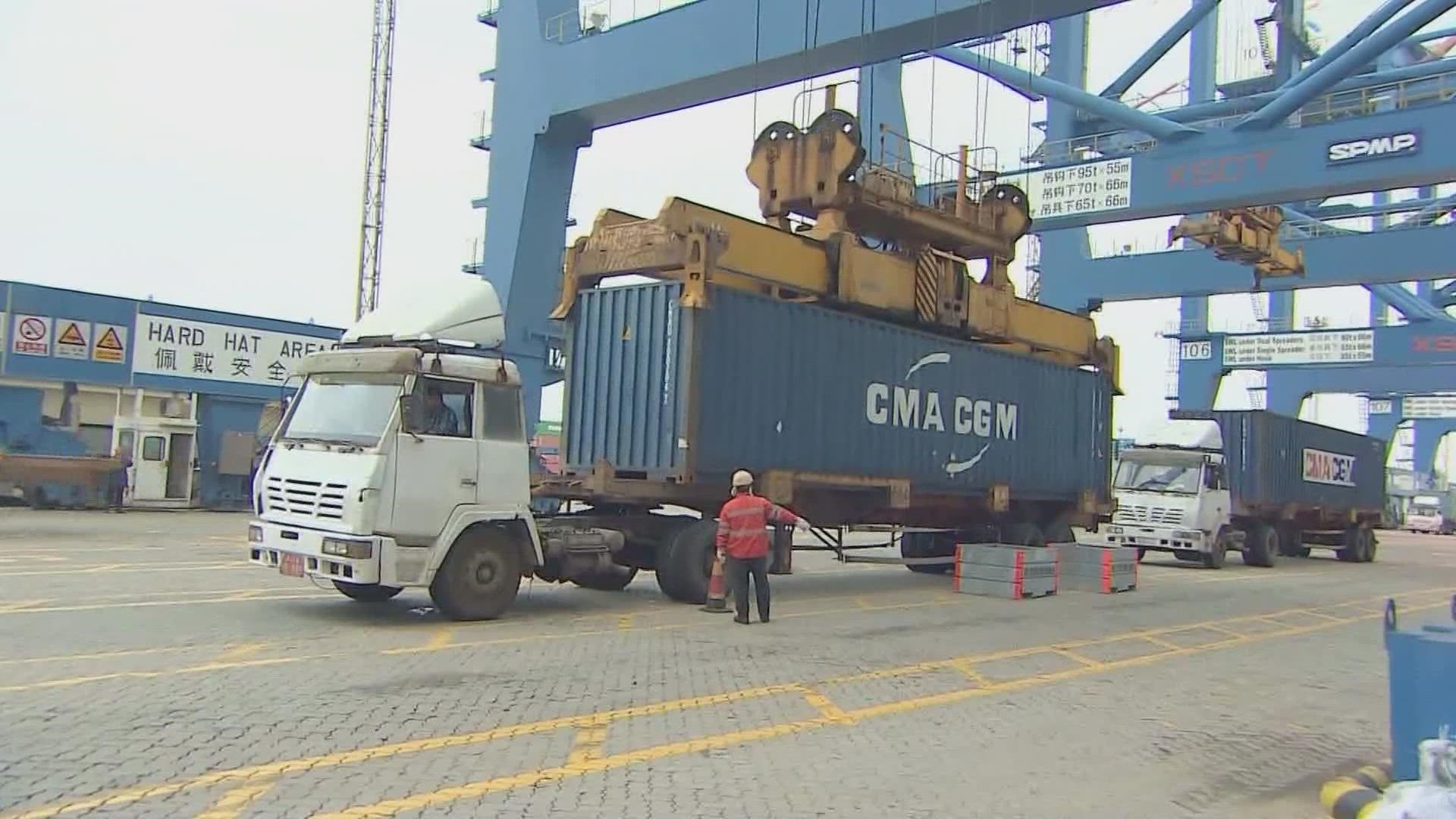DENVER — Professor Jack Buffington is the program director for Supply Chain Management at the University of Denver.
In this interview, he helps explain what's happening with the world's supply chain right now, and why issues will likely persist into 2022.
Editor's note: This interview has been edited for context and clarity.
9NEWS: What's going on right now?
Buffington: The key to supply chains is consistency, and when there’s any sort of disruption, the problem with supply chains is the weakest link in the chain can cause the biggest problem that can reverberate across a supply chain.
With all the pandemic problems we’re having, and other challenges we’re having with oil prices and everything like that, that’s what you’re seeing.
We thought that it would be fixed by now, but we still have the problems from COVID. We’re still seeing disruptions, and a lot of people think the disruptions will go into 2022.
People remember the toilet paper hoarding and might think of that as being in the distant past, but similar issues are still happening, right?
Buffington: Right. A lot of it has to do with the fact that we consider supply chain to still be in peak season, and by that we mean the demand is greater than the supply. In some situations it’s because of greater consumer purchases, and in other situations it could be a reduction in supply.
Reduction in supply could mean a factory is shut down in China, or there’s problems with transportation showing up, or there’s not enough containers to move things around the country and around the world.
What are some of the factors causing supply chain issues beyond the pandemic?
Buffington: I think the really interesting one has to do with climate change. Some countries are trying to address the problem, like in China where they’re trying to address the problem of how much coal they use.
They’re trying to reduce emissions, but by doing that they’re having an impact on the energy market. And due to trying to reduce usage, some factories are not getting the same amount of coal that they had before, which is causing disruptions that we’re seeing to the flow of goods we buy in the United States.
You talk about the weakest link in the supply chain, and we're seeing the smallest things like a truck breaking down having a domino effect.
Buffington: This is what's called the bullwhip effect. There's one link in the supply chain where a disruption occurs--somebody expected it to happen and it didn't, so they respond in a way that creates a tidal wave of disruption.
That leads to some of the big problems we're seeing with appliances, or Apple computers or the chip manufacturing issues we're seeing with automobiles.
Are these problems linked to everyday consumer issues, like ordering a shirt online that gets delayed?
Buffington: It definitely is linked. It could be due to a myriad of factors. It could be due to a forecast. The retailer put in a forecast and they got demand that was higher. It could be due to some problems with the factory when it comes to labor. It often has to do with issues with containers coming from Asia to the United States.
What causes the backlog of ships and container issues at California ports?
Buffington: The original problem had to do with the containers. For the supply chains to operate efficiently, you want to have the right number of containers, but not too many.
When there's bog downs happening in one place, there's not enough containers to load or there's not enough containers to empty, then what happens is things slow down and then all of a sudden everything comes at once.
So in the Port of Los Angeles, for example, there's been records set on how many ships are out there waiting to be unloaded.
How does this end?
Buffington: We're hoping to see a decrease in disruptions. Supply chains need to operate at low variation because consumers want low prices. You can fix some of these problems by carrying more inventory to address some of the disruption, but that would just raise cost. A lot of retailers don’t think consumers would tolerate too much price increase, so they try to manage that.
What should consumers do to prepare?
Buffington: If you have enough time and enough money, you can always plan in advance. The other strategy is you wait until the last minute to see what bargains are out there.
If the supply chain goes up and down like this, you could get some fantastic bargains at the end when the retailers thought that people were going to buy more and they bought less, or something else spiraled into the supply chain.
Is another strategy to buy local?
Buffington: A lot of people think buying local, that's the best strategy, but of course the challenge with that strategy is cost. And some of the things that really matter, that I think are really crucial, would be pharmaceuticals and personal protective equipment. These things really are life and death, and some of the other stuff you're just going to have to be patient, and you're just going to have to spend more money.
What are you talking about to your students right now?
Buffington: The one thing we’ve really talked about with businesses is that they have to look at themselves as information companies. A lot of these companies in supply chain focus on their factories, or they focus on their trucks and everything like that. They focus on the physical side of the business.
But how they're going to win these, and how you hear companies are being successful in addressing some of these variations, is through better information systems so they can predict sooner what's going to happen to respond quicker.
SUGGESTED VIDEOS: Latest from 9NEWS

